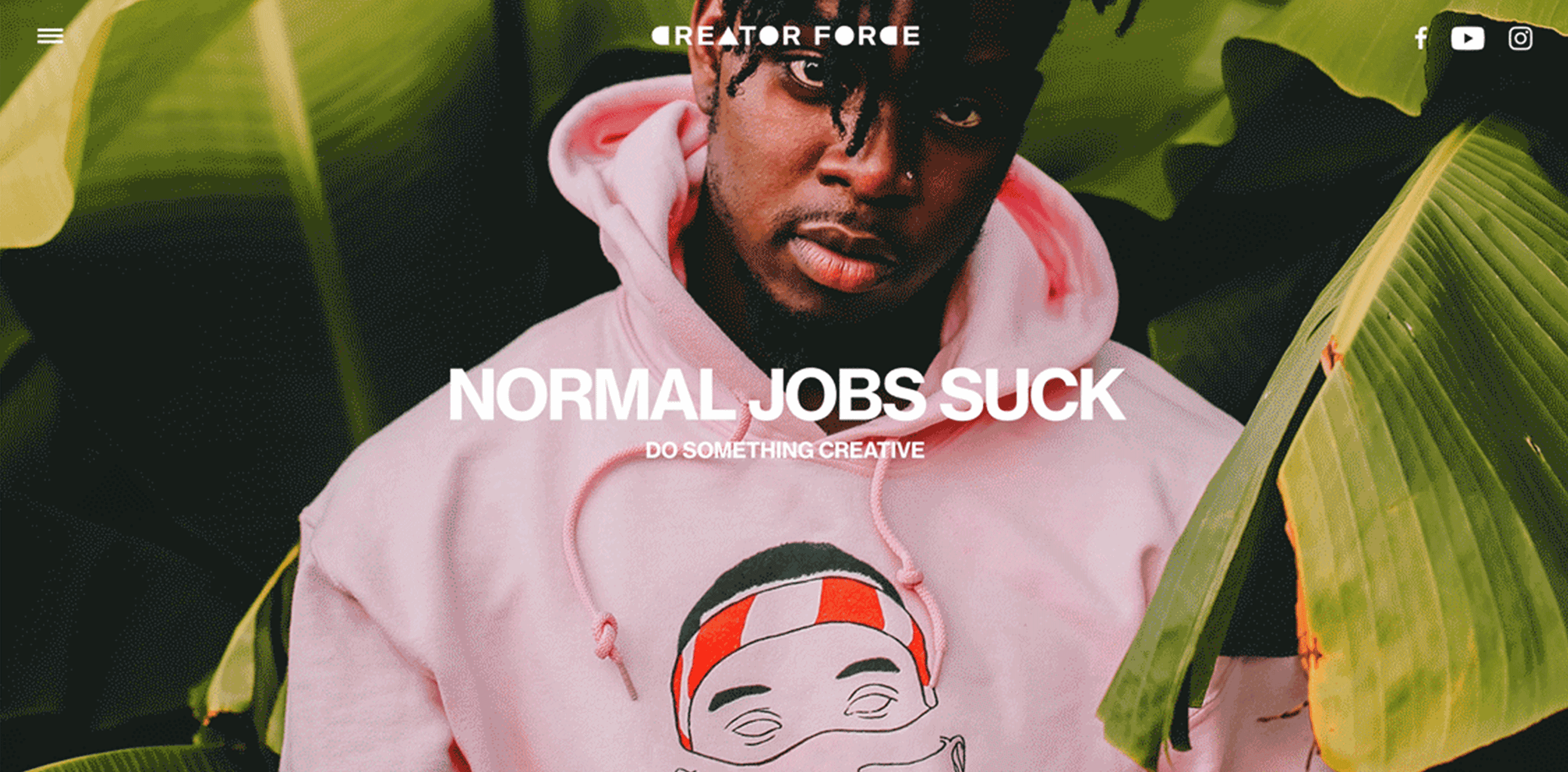

We created Creator Force to change how young people of color see the creative industry — and how the industry sees them.
Through a bold brand identity and responsive digital experience, we mapped out the invisible jobs behind every show, campaign, and production. The platform gives students, creators, and overlooked communities real access to what’s possible — shifting perception from “Can I?” to “How do I get started?”
CreativeForce began with one goal: to demystify the creative industry by showing the many paths into it — directly from the people living it. We collaborated with a range of professionals, from production studio veterans to tech creatives to multidisciplinary freelancers. Instead of just highlighting polished work, we focused on process and conversation. Through raw, honest interviews and editorial-style photography, we built a visual and narrative series that showcased the diversity of creative careers — not just in what they do, but how they got there.
Each story became a building block. We didn’t script a campaign — we listened, documented, and then let the content speak. What emerged was a collection of real-life blueprints: different ways into the creative industry, captured through visuals, voice, and presence. The result was a bold tone that felt accessible, empowering, and unapologetically individual — the kind of campaign that quietly says, “Why not you?”
The campaign landed with authenticity and sparked real conversation. As we rolled out the content across our website and Instagram, the response was immediate — creatives began engaging with the stories, sharing their own, and reaching out for collaboration. We saw a ripple effect: people felt seen, others felt inspired, and many began exploring creative roles they hadn’t considered before.
Our partners were not just pleased — they were energized. The campaign opened new visibility for them while staying rooted in integrity and narrative truth. It wasn’t just a project; it was a launchpad for momentum. CreativeForce didn’t just show the work — it became part of the conversation around what creative success can look like, and how you don’t have to follow the traditional script to get there.